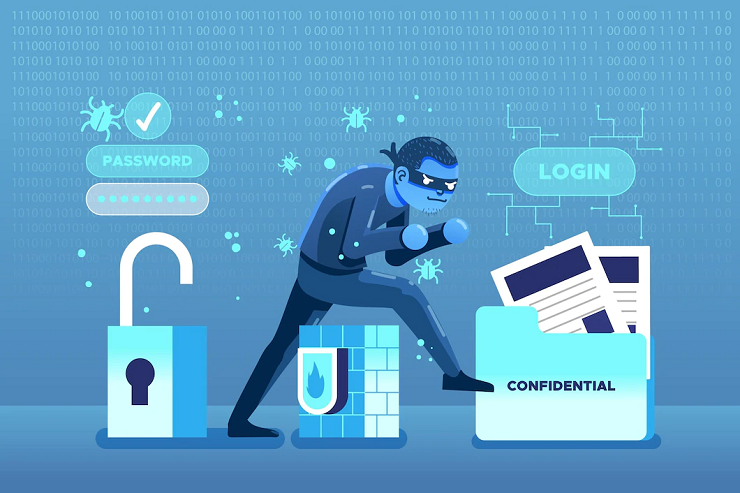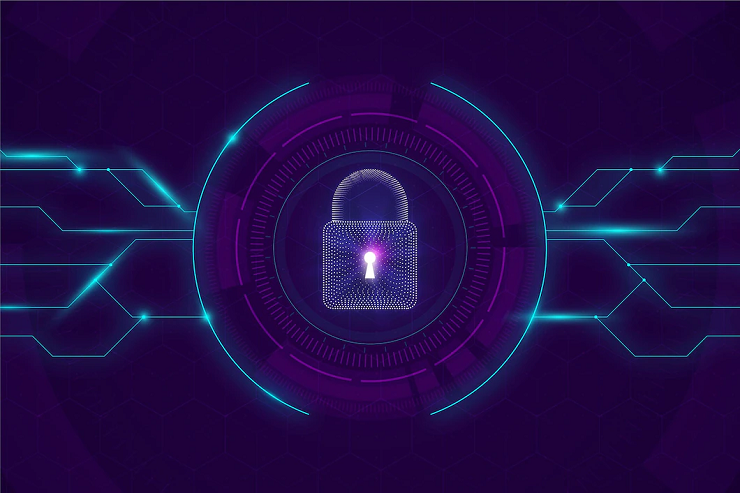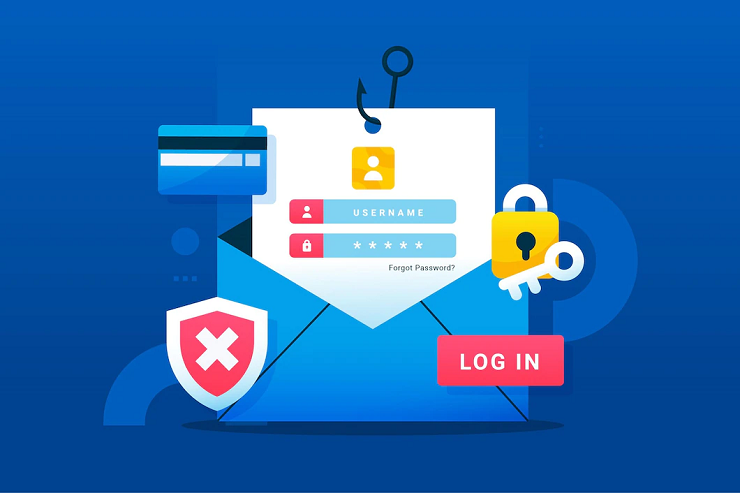
In the age of digital business, data is everything. Your customer data, employee data, and company data are all valuable assets that need to be protected. And while you may have security measures to protect your data from external threats, what about internal threats? Threat hunting comes into play here. Threat hunting is a proactive approach to security that involves identifying and investigating potential security threats before they cause damage. In this blog post, we will explore how threat-hunting techniques can protect your business from both internal and external threats. We will also provide a step-by-step guide on implementing a threat-hunting program in your organization.
What Is Threat Hunting?
Threat hunting is a proactive cybersecurity technique that proactively searches for indicators of compromise (IOCs) within an organization’s network. The goal of threat hunting is to find a malicious activity that has evaded detection by traditional security defenses. Threat hunting requires security analysts to have a deep understanding of how attackers operate and think like them to identify potential threats. This includes knowing what IOCs to look for and having the right tools to conduct searches efficiently. Organizations can benefit from threat hunting by reducing their overall risk exposure and improving their incident response capabilities. When conducted regularly, threat hunting can help organizations stay one step ahead of attackers and better protect critical data assets.
Threat Hunting Vs Threat Detection
Threat hunting is different from threat detection because it is a proactive rather than reactive approach. With threat detection, businesses wait for signs of an attack before taking action. This can often be too late, as attackers can wreak havoc in a concise amount of time. On the other hand, threat hunting involves continuously scanning an organization’s networks and systems for IOCs. This allows businesses to find and stop attacks before they happen.
How Does Threat Hunting Work?
Threat Hunting Generally Follows These Steps:
- Identify potential threats: First, businesses must identify the types of threats they are most likely to face. This includes understanding the methods attackers use to gain access to networks and systems, as well as the types of data they are targeting.
- Collect data: Once potential threats have been identified, businesses need to collect data that can be used to identify IOCs. This data can come from various sources, including network traffic, system logs, and user activity records.
- Analyze data: Once the data has been collected, it needs to be analyzed for signs of malicious activity. This usually involves using specialized software to look for.

How Can Threat Hunting Help Your Business?
Threat hunting offers benefits that go beyond merely identifying sophisticated adversaries. It can also reveal: It gives visibility into your network, confidence in your security posture, and can detect malicious activity in addition to negative administrative procedures using unlicensed software. Some of them include the following:
1. Discover Security Incidents Proactively
Threat hunting is used to spot covert dangers (like malware) that are lurking in the shadows and, ultimately, to track down offenders who have already breached the organization’s systems and networks. It can be useful to proactively identify adversaries who have already managed to get past the organization’s defenses and establish a malign presence there. To stop the current attackers, hunting is used.
2. Cut Down On Research Time
A security team’s ability to better understand an incident from its scope to its causes and predict its impact is made possible by threat hunting. To investigate potential compromises and strengthen cyberdefenses, an active approach that actively searches for malicious content in computer network traffic can help gather crucial information for post-incident investigations. This will make it easier to draw out lessons learned and fix any potential problems.
3. Increase The Threat Response’s Speed
According to Crowd Research Partners’ Threat Hunting Report, threat management continues to be the biggest challenge for SOCs. The approach taken by threat hunting is network scanning for signs of unusual activity brought on by potential attacks; this involves a human-driven process intended to look for the threats that automated systems or traditional detection methods might miss. Ad-hoc hunts can more quickly locate a specific activity or attack pattern that may already be present in an IT environment. The better the result, the faster active threats are detected and reported to an incident responder who will “have the knowledge and experience to quickly respond to the threat and neutralize it before more damage to network and data occurs.”

4. Help Cybersecurity Analysts Comprehend The Business
The best way to stop potential advanced persistent threats (APTs) or other external attacks that could leave a company open to data breaches is through threat hunting. Additionally, it provides IT analysts with a much clearer overall picture of the organization’s security situation today and its anticipated resilience to different attacks. Threat intelligence allows analysts and incident responders to receive actionable intelligence, which is data that has been analyzed, contextualized, timely, accurate, relevant, and predictive. Threat intelligence also allows for further anticipation of the identification of a specific threat.
5. Develops SOCs For The Future
An effective threat-hunting platform is crucial for security operations centers and comes with useful tools (SOCs). It may be possible to use tools like security information and event management (SIEM) software or an intrusion detection system (IDS) to help identify anomalies, allowing for more accurate cyber-security threat identification and the ability to counteract it. This will aid in averting or minimizing further harm. However, a good platform also has quick and efficient methods for converting unprocessed data from various sources into information that can be used. It can even save analysts time by removing the need for them to correlate events manually; it can aggregate “feeds” from various sources to produce valuable intelligence data.
What Are Threat-Hunting Techniques?
These threat-hunting techniques can benefit organizations in several ways, including a reduction in breaches and attempted breaches, an improvement in incident response accuracy and speed, and a general improvement in the managed security of an organization’s environment. What methods of threat hunting are thus frequently employed in the modern cyber environment?
Here are the top four threat-hunting strategies that companies can use to find and classify all types of cyber threats, including sporadic, ongoing, and sophisticated persistent threats.

1. Test Evolving Theories Using All Available Data
Missing data can result in an unnoticed cyber threat and, if it goes unchecked for too long, a costly and potentially high-profile breach. Threat-hunting SOCs understand the need for a single point of access to all real-time and historical data for thorough analysis. To test evolving hypotheses, it is necessary to gather, store, and analyze all security data in one location, regardless of type, source, or time horizon.
2. Analyze Historical Data
Threats are pervasive and can go unnoticed for months or even years. The goal of modern SecOps is to accurately determine the threat path, tactics, and impact on the company by combining the analysis of live, hot data with historical analytics. This necessitates the use of a robust data platform that can continuously gather and archive event data. For threat hunting, it is essential to be able to quickly look back and drill down into petabytes of data to find patterns.
3. Encourage Innovation With Agile Search
Threat-hunting does not always produce a successful result. Throughout the investigation process, hunters may test various hypotheses. They require agile querying capabilities as a result to pivot, filter, and refining their analyses. Platforms for threat hunting encourage creative sleuthing by facilitating quick, easy queries at scale. Without having to wait for hours to see the results of their queries, threat hunters can now gather, analyze, and connect various data sets for a richer context.
4. Bring Threat Intelligence Together
Without threat intelligence, it is challenging to identify cyber threats such as advanced persistent threats, or APTs. Threat hunters use indicators of compromise (IoCs) and high-confidence, high-fidelity threat intelligence feeds to guide their analyses. To do this, a single threat-hunting platform must incorporate feeds from proprietary, external, and open-source intelligence sources (OSINT). and automatically adding pertinent context to hunts.

Conclusion
A great tool for business protection is threat hunting, which actively scans your IT network for threats. Even though it adds a layer of security, learning how threat hunting operates takes time and effort. I hope you found this blog helpful.
